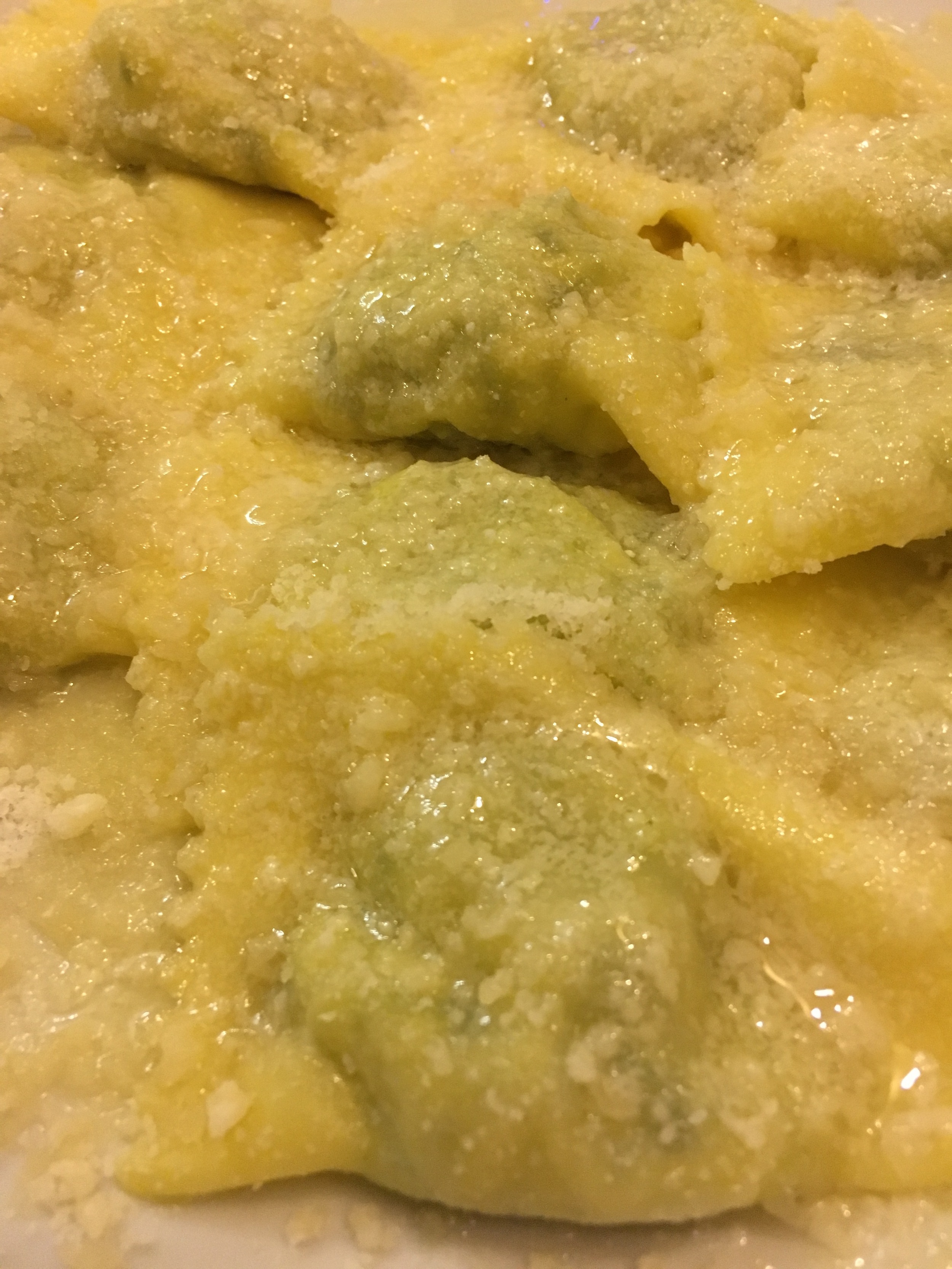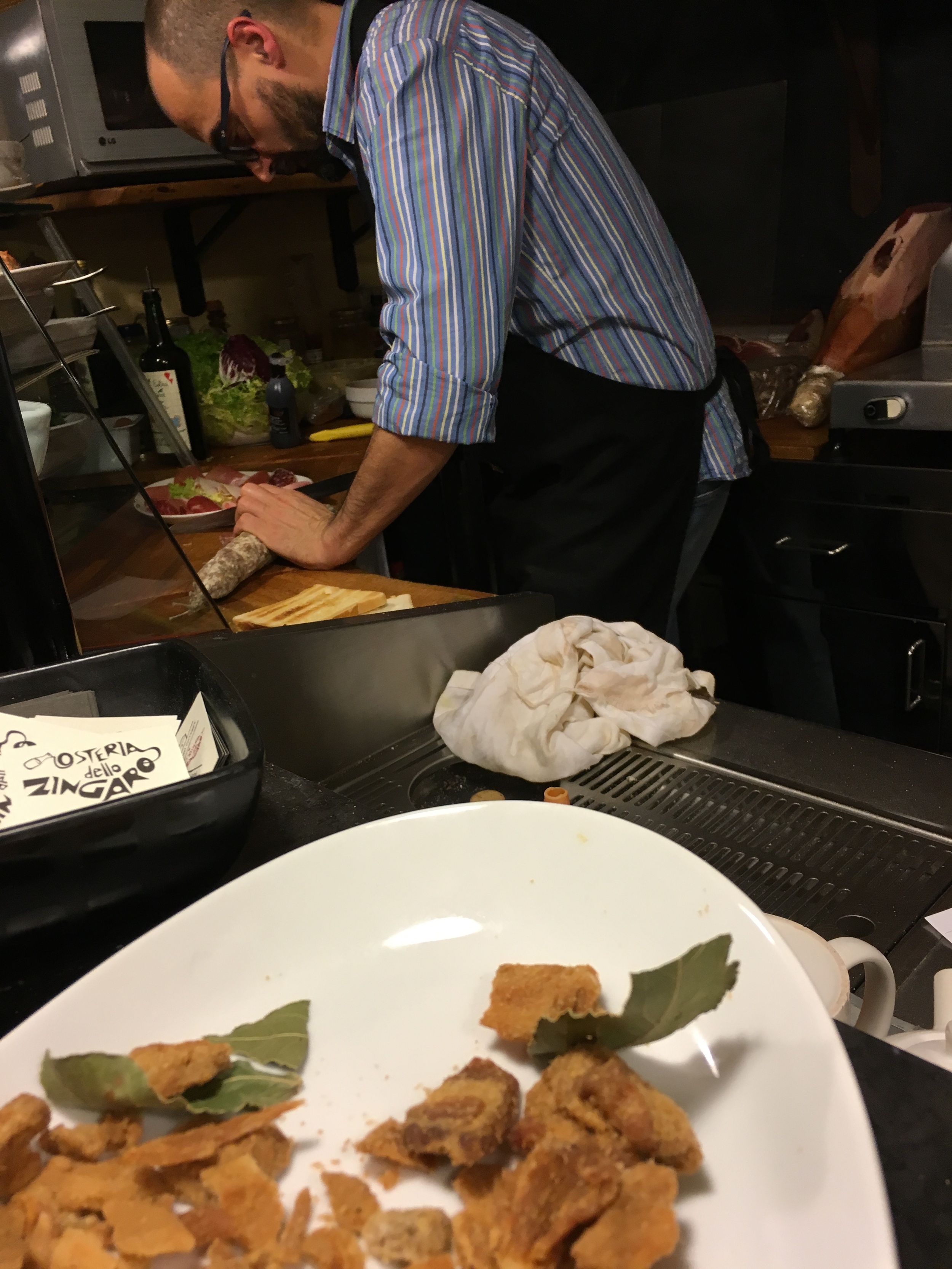As a winemaker, I am built to talk about terroir. Terroir, is the French term used to describe the place of origin, a unique set of descriptors for a wine from a specific region, vineyard, or vineyard block. Cabernet Sauvignon from a specific vineyard in Dry Creek Valley has a unique terroir different from a vineyard in Napa.

Photo by Stephanie Seacrest
In the same vein as a wine tasting, I attended a cheese tasting sponsored by the Parmigiano Reggiano Academy at Cookhouse in San Francisco. I didn’t know what to expect from a cheese tasting. I’ve been to countless wine tastings for 20 years, arranged by everyone from the local wine shop to events sponsored by a particular viticultural region. I always learn something, either about my own palate or about the wine being drunk.

Photo by David Scheidt, Parma, Italy 2009
The focus of the Parmigiano tasting was to sample Parmigiano Reggiano aged 14-18 months, 24 months (Vecchio), 36 months (Stravecchio), directly from the wheel and incorporated with food. Chef Jordan Schacter of Jordan’s Kitchen in San Francisco, prepared an entire menu of Parmigiano heavy, small plates ranging from a Parmigiano crisp pizza to Parmigiano polenta topped with sugo. My personal favorite Parmigiano inspired dish of the night? Parmigiano and mushroom accented brodo.
Why would anyone consider Parmigiano Reggiano a homogenous branded cheese from Italy?
If I were to tell a fellow wine maker or sommelier that all Cabernet Sauvignon, aged for 12 months from the Sonoma County AVA is basically the same product, I’d get some real funny looks.
But that's exactly what many of us do when we speak generically of Parmigiano. And here's why...
An accurate definition of Parmigiano Reggiano and a good enough answer for most would be that Parmigiano Reggiano is produced exclusively in the provinces of Parma, Reggio Emilia, Modena and parts of the provinces of Mantua and Bologna, on the plains, hills and mountains enclosed between the rivers Po and Reno, made exclusively of cow’s milk, made with natural rennet and aged a minimum of 12 months.
But the answer above only describes the minimum requirements to be called Parmigiano Reggiano.

Photo by Stephanie Seacrest
For the Parmigiano tasting at Cookhouse, the focus of the evening was on the age of the cheese, from 14 months to 36 month. Parmigiano at 36 months is certainly drier in mouth feel, has a more crumbly texture, and greater intensity of flavor that a 14 month old wheel. A 14 month Parmigiano could easily be described as creamy. Each cheese maturity level can also have different applications in the culinary world, with younger cheeses playing a supporting role in polenta, while a stravecchio parmigiano a leading role on a cheese plate with balsamico.
Beyond the sensory and maturity characteristics we focused on that evening, I began to become even more curious about the specific origins of Parmigiano Reggiano.

Photo by Stephanie Seacrest
384 dairies are responsible for all of the Parmigiano production, globally distributed, of which 34% is exported to countries like the United States. Each dairy produces milk throughout the year from various cows, in various regions, independently of each other.
Each dairy will have variations in cows, harvest, feed, temperature, etc. Similarly in the production of wine, there are variations in soil type, fertilization, sun aspect, and temperature. Cabernet Sauvignon Clone 7 grown in Alexander Valley, while genetically the same as Cabernet Clone 7 grown in Dry Creek Valley will have dramatically different flavors even if harvested on the same day each year, even if only grown 5 miles apart. Conditions vary from region to region, town to town, winery to winery, winemaker to winemaker. In the case of Parmigiano, conditions vary from dairy to dairy and cow to cow throughout the region of Emilia Romagna.
If there are 384 dairies, how many different cheese makers are there? One for each dairy? Again, the analogy to wine makers is appropriate and accurate. No matter the minimum production standard, each cheese maker has learned a technique, timing, and “feel” differently than their counterparts at other dairies, just like wine makers.

Photo by Stephanie Seacrest
With all the potential variables for each wheel of Parmigiano, why do so many consumers and cheese mongers generalize Parmigiano Reggiano as some homogenized product; albeit hand-made and of the utmost quality? Various conditions exist in raising cattle as they do in winemaking; yet a sommelier would never consider all Cabernet Sauvignon from Sonoma County homogenized. That would be blasphemy! It’s actually a disservice to generalize and homogenize Parmigiano Reggiano into a monolithic hard Italian cheese.
A few basic distinctions when consuming and buying Parmigiano Reggiano:
- Milk comes from Red Cows, Brown Cows and Holsteins. Certain dairies will stamp their certified Parmigiano wheels with a secondary brand, indicating place of origin and the type of cow used for milk. Red and Brown cow milk is more highly prized and more rare than Parmigiano made from Holsteins.
- Cows are milked throughout the year, causing seasonal variations in the milk, spring versus winter milks, and the diet of the cows from dairy to dairy can vary. Each wheel of Parmigiano is stamped by month, to ensure the 12 month minimum aging requirement, but nothing more.
- There is no legal certification beyond 12 months of aging. Dairies, exporters, and your local cheese monger may or may not know and is under no obligation to disclose the various ages of the cheese. However, there is an obvious difference in flavor, texture, and visual appearance between a 14 month and a 36 month piece of cheese.

After a couple hours eating, discussing, and analyzing Parmigiano Reggiano I have a new respect, understanding, and inquisitiveness about The King of Italian Cheeses and the vast kingdom of Parmigiano Reggiano.
Just as I never take Cabernet Sauvignon from Dry Creek Valley for granted, I will never take another purchase of Parmigiano Reggiano for granted either.

Photo by Stephanie Seacrest



















